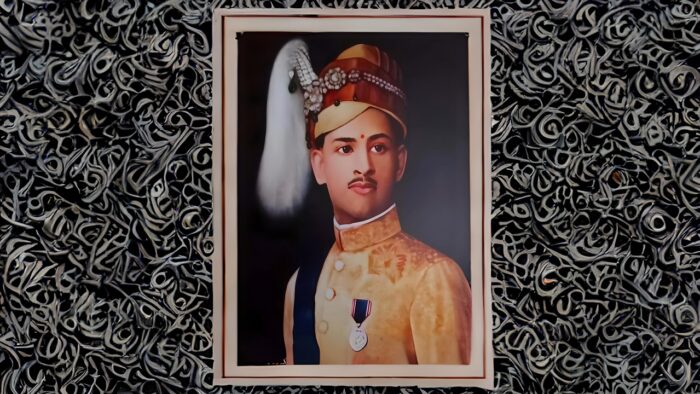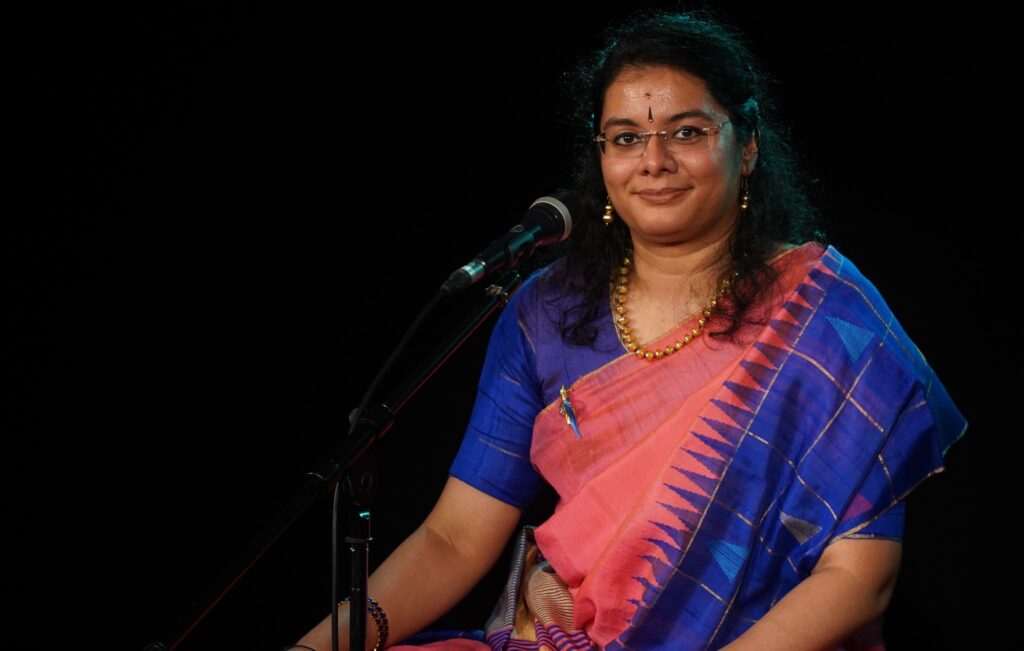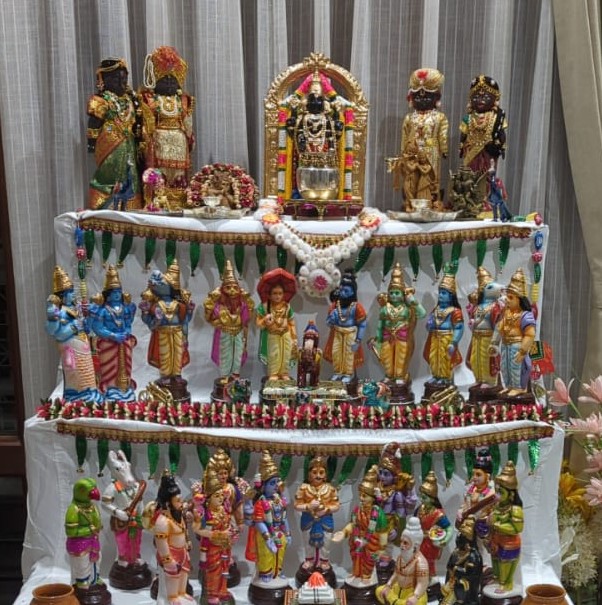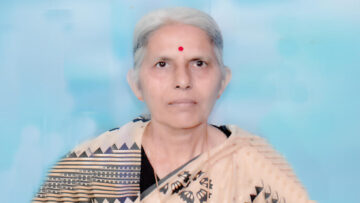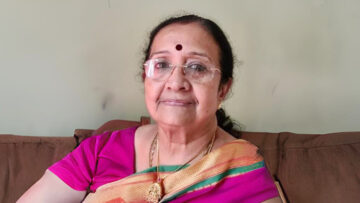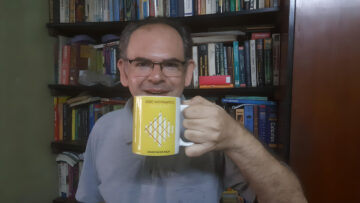What is common between Adi Shankara, Swāmi Vivekānanda and Mahārāja Swāti Tirunal? These great men have left an indelible mark on the philosophical, religious, and cultural landscape of Bhārat despite their extremely short life. Their impact is timeless and a testament to the extraordinary power of passion, purpose, and brilliance in a single soul to protect, preserve and promote Sanatana Dharma. Through their legacy, millions of Bhāratiyas continue to be torchbearers of our samskriti.
Swāti Tirunal, also known as Mahārāja Swāti Tirunal Rama Varma (1813-1846), was a ruler, artist, a connoisseur of the arts, and a prolific composer. His legacy is deeply entwined with his brilliant contributions to classical Indian music, particularly the Carnatic tradition. Swāti Tirunal’s compositions are characterised by their lyrical beauty and emotive depth and are all mostly addressed to Padmanābha, the devata of Thiruvananthapuram. Even to this day, his compositions are widely revered and performed by musicians and music enthusiasts worldwide, testifying to their timeless appeal. The celebrations are even more special during the Sharannavarātri season every year. Navarātri Mandapam , a special stage near the east gopuram of Anantha Padmanābha Swamy Temple, lights up with luminaries in the field of classical music. These artists perform compositions of Mahārāja Swāti Tirunal at the event. The highlight is a set of nine compositions collectively referred to as Navarātri Kritis specifically composed by Swāti Tirunal for the Navarātri season. (Kriti (kṛti) means creation or work and is another name for a carnatic musical composition.)
There is a strict ban on electrical lighting and applause at the venue which infuses an old world charm to the atmosphere. Typically, a carnatic concert aka kutcheri has bright lightings and the performances are interspersed with loud applause and exclamations from the audience, especially after an ālāpana (exposition of a Rāga), a tani āvartanam (an extended solo by one of the instrumentalists) and at the end of a composition. However, the absence of all this at the Navarātri mandapam, naturally heightens the enjoyment of rasikas (connoisseurs of art) who gather at Thiruvananthapuram in large numbers every navratri of sharad ritu (autumn season). This low lighting atmosphere is also the reason for absence of live video broadcast of the event. All these so-called ‘restrictions’ make the entire concert experience both divine and intimate. Many renowned faces in the carnatic music scene offer their performance at the feet of Devi Saraswathi who presides over the Navarātri Mandapam.
Smitha H.S, an author at Indica Today, had the wonderful opportunity to interact with Vidushi Amrutha Venkatesh, one such artist who has been performing at the Navarātri Mandapam in Thiruvananthapuram since 2009.
(Figure 1: Vidushi Amrutha Venkatesh)
Amrutha says, “When I was growing up, not a single day went by without listening to live concerts.”
This samskara instilled a deep desire to pursue the classical artform so she can ascend the stage and perform one day. Her family members who were themselves experts in the field of music and musicology, were also regular concert goers. They instantly recognised Amrutha’s natural affinity to carnatic music and did everything in their capacity to further nurture and support Amrutha in her musical journey. She says,
“My Mother is my main source of inspiration and she has put her life on hold completely and made my music and life her priority since the time I can remember.She left no stone unturned ensuring I received the right training and guidance from the tender age of two and a half!”
Vidushi Amrutha Venkatesh has learnt under many stalwart gurus like Smt Sharada Shivaram, Smt Malathi Singlachar, Vidwan Sri M.T. Selvanarayana, Dr. Suma Sudhindra, Vidushi Smt Charumathi Ramachandra, Prince Rama Varma and Professor Parassala B. Ponnammal. Amrutha continues to learn under some of these gurus and also teaches many young students, carrying forward the Guru-shishya parampara. It is fascinating to see the diverse influences in Amrutha’s musical learnings. Each of her gurus belong to an illustrious lineage of Vidwans like Chintalapalli Sri Ramachandra Rao, Dr R.K. Srikantan, Vidushi M.L. Vasanthakumari, Vechoor Sri Hariharasubramania Iyer, Dr. M. Balamuralikrishna and Semmangudi Sri Srinivasa Iyer. Amrutha says,
“I am grateful to belong to a combination of different lineages and I feel it is a responsibility to carry forward the Music and musical values of each of my Gurus.The variety that each of my Gurus has had to offer , has taught me that it is so important to diversify repertoire , expand the musical thinking process , work towards as much perfection as possible, be open minded to a wide gamut of musical ideas and stay true to whatever I choose to sing.”
Learning from such a diverse range of artists has only resulted in liberating Amrutha to abundantly experiment and reinvent within the shastric framework of Indian classical music.
Mahārāja Swāti Tirunal is one of Amrutha’s favourite composers and she thoroughly enjoys learning, performing, teaching and tuning his compositions. For Amrutha, Navarātris are a season to celebrate the life and legacy of Mahārāja Swāti Tirunal at the very Mandapam he established nearly 200 years ago.
Growing up, Navarātri celebrations for Amrutha, centred around the grand Golu (doll display) at her paternal grandmother’s house. Amrutha still remembers the fervour and festivity around the stepwise setting up dolls with every possible devi, devatas and other miniature idols. A well dressed Marppachi Raja & Rani (wooden dolls, typically inherited from the mother’s side) was a must-have. Each year, her grandmother displayed a new theme like Shiva-Parvati at their Kailasa abode or Ranganathaswamy at Srirangam. She says,
“Apart from the ‘serious’ themes that would be the centre-piece , there would be kid-friendly sections like ‘Cricket set ‘, ‘Barbie House ‘ , Channapatna Mysore Palace set , Hot Wheels car collection , Carnival set , Train Tracks with a toy train whizzing by.”
However, the highlight of the display for hundreds of visitors who thronged their house was Amrutha’s musical performance in all its glory.
(Figure 2: Typical Golu Display)
Since 2009, Navarārti for Amrutha, is all about performing at the Navarātri mandapam as well as listening to other artists at the venue. She says the divine energy in the air during the concert is very palpable. The grace of nearby Padmanabhaswamy, the blessings of presiding Devi Saraswathi, lilting beauty of Navarārti Kritis, the glorious line-up of artists who have performed here in the past, the freshness that new artists continue to bring on stage, hospitality of the host and ultimately the warmth of rasikas, make the celebrations at Navarātri Mandapam more special with each passing year.
According to her, Saraswathi pooja is not just one day of the Navarātri festival. Instead, she believes an artist worships Devi Saraswathi every day through her practice of the artform and its academic pursuit.
There is an interesting story behind the Saraswathi murti that adorns the mandapam. It apparently belonged to Sage Kambar, the 12th century poet who composed Rāmāvatāram, the Tamil version of Valmiki’s Ramayana. The murti of devi which usually resides at Padmanabhapuram, is carried by elephants during the Navarātri festival to Thiruvananthapuram and kept at the Navarātri Mandapam for pooja. Devi Saraswathi presides over all the concerts where each artist performs their repertoire of diverse compositions by Swāti Tirunal. which invariably include at least one of the nine Navarātri Kritis. Every artist at this concert believes they are offering themselves to the devi through this sangeetha seva.
Composed in the Sanskrit language and each set to a unique Rāga, these nine Kritis are rich in both shabdālankara (figure of speech in sound) and arthālankara (figure of speech in sense). The ultimate beauty of these Kritis is the scope offered to each performing artist to further embellish the compositions with musical ornamentations of their choice. The kritis create beautiful imagery of Adi Shakti Mātā, bedecked in jewels, with celestials worshipping her in her many forms in the minds of rasikas. Describing the many manifestations of Shakti as Maha Durga, Maha Saraswathi and Maha Lakshmi, these kritis, when performed, create an electrifying and unparalleled ambience at the venue. All India Radio Thiruvananthapuram broadcasts the concert every evening during this season.
The nine Kritis are as follows :
- Devi Jagajjanani [Rāga : Shankarābharanam]
- Pahimām Shri Vageeshwari [Rāga : Kalyani]
- Devi Pāvane [Rāga : Sāveri]
- Bhārathi Māmava [Rāga : Todi]
- Janani Māmavameye [Rāga : Bhairavi]
- Saroruhāsana Jāye [Rāga : Pantuvarāli]
- Janani Pāhi [Rāga : Shuddha Sāveri]
- Pāhi Janani Sanātanam [Rāga : Natakuranji]
- Pāhi Parvata Vardhini [Rāga :Ārabhi]
Watch Amrutha’s performance of Navarātri Kritis here where she also briefly talks about each of them : Amrutha Venkatesh – Navarathri Kritis – Mahārāja Swathi Thirunal – YouTube
Vidushi Amrutha Venkatesh is a true torchbearer of Bhāratiya samskriti. She has an extremely popular presence on the internet. However, she feels creating a career trajectory that has quality as the main focus is of utmost importance apart from being a trendsetter in her discipline.
“ I am also blessed to have the unstinting support of family and Gurus that gives me further strength.”
When asked about how she envisions the future of Carnatic classical music and its celebrations through the festivals, Amrutha had this to say,
“If the current trends are anything to go by, every artist has scope to show brilliance. There are audiences with diverse tastes, artists with a wide spectrum of goals, different organisers who highlight various artists . With the Internet and technology that is advancing at such a rapid pace, the World is the Stage and anyone who chooses to pursue the art form , can build an audience base , whether this is centered around a festival or otherwise. Celebrations like the one at Navarātri Mandapam will hopefully continue for centuries to come and be spoken about in every millennium to come.”
Shubha Navarātri
Disclaimer: The opinions expressed in this article belong to the author. Indic Today is neither responsible nor liable for the accuracy, completeness, suitability, or validity of any information in the article.

